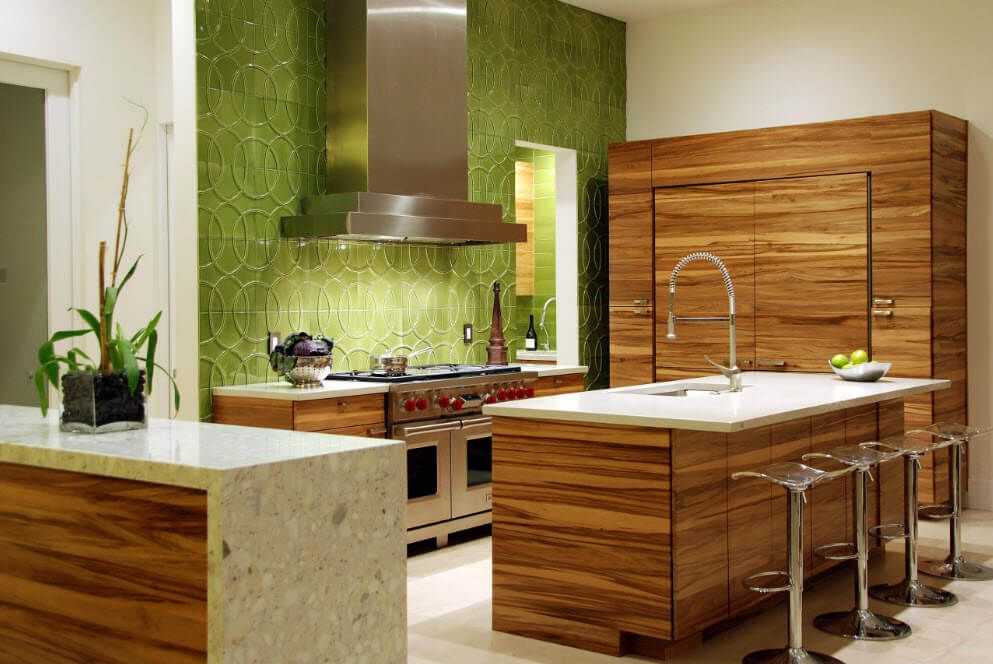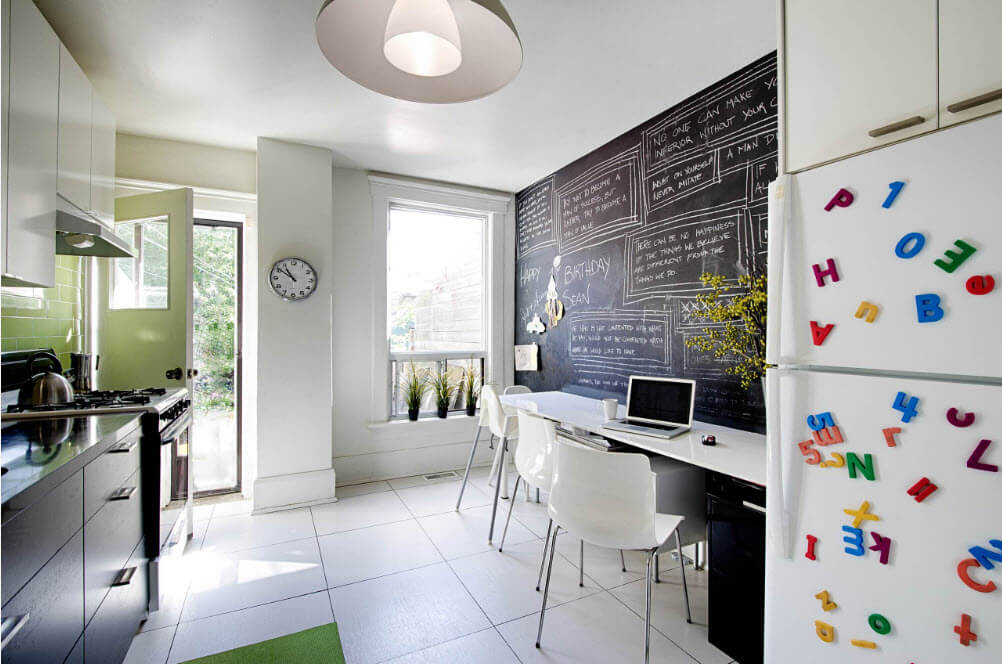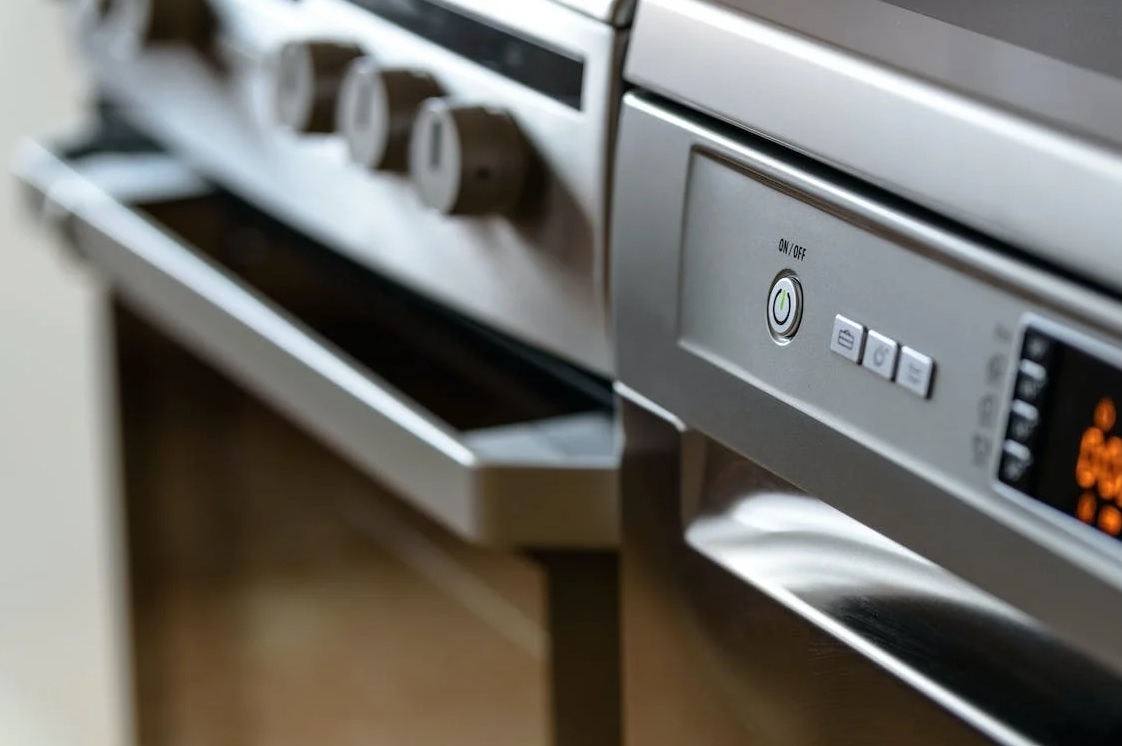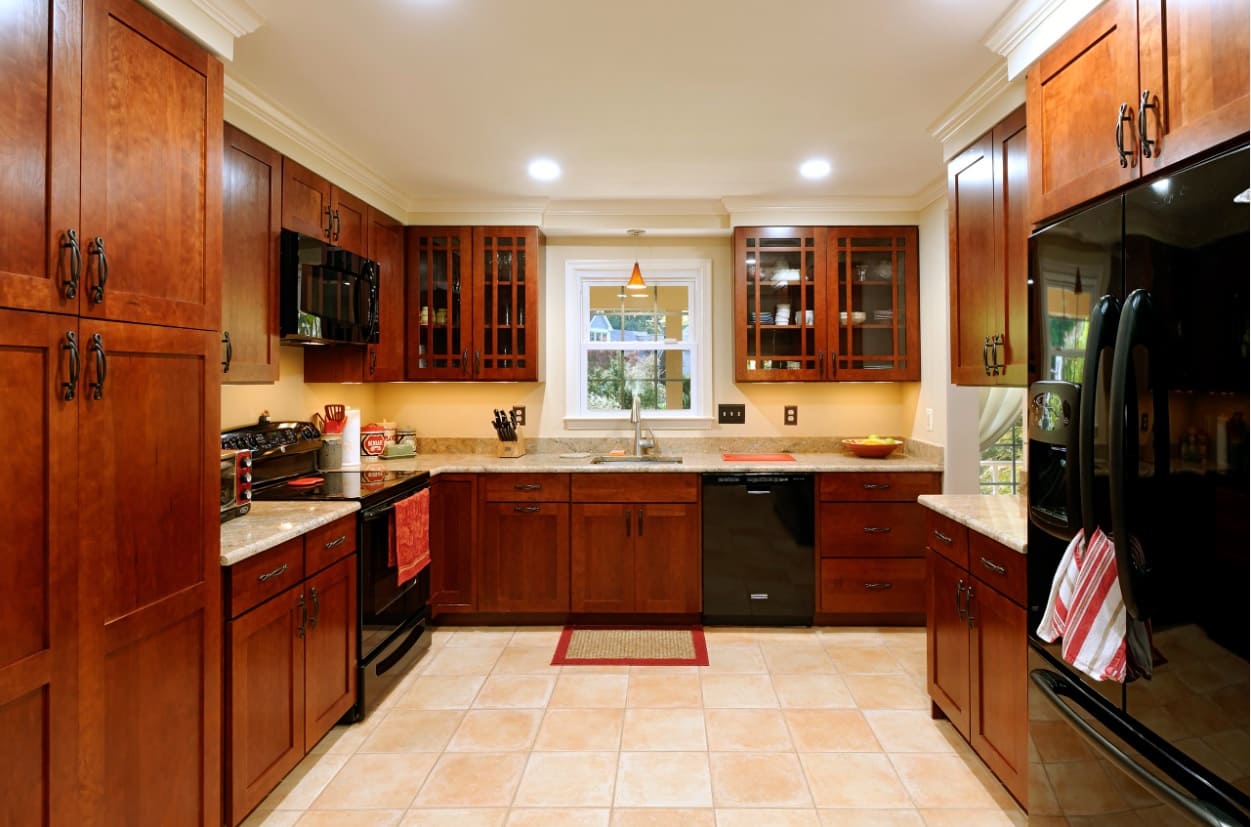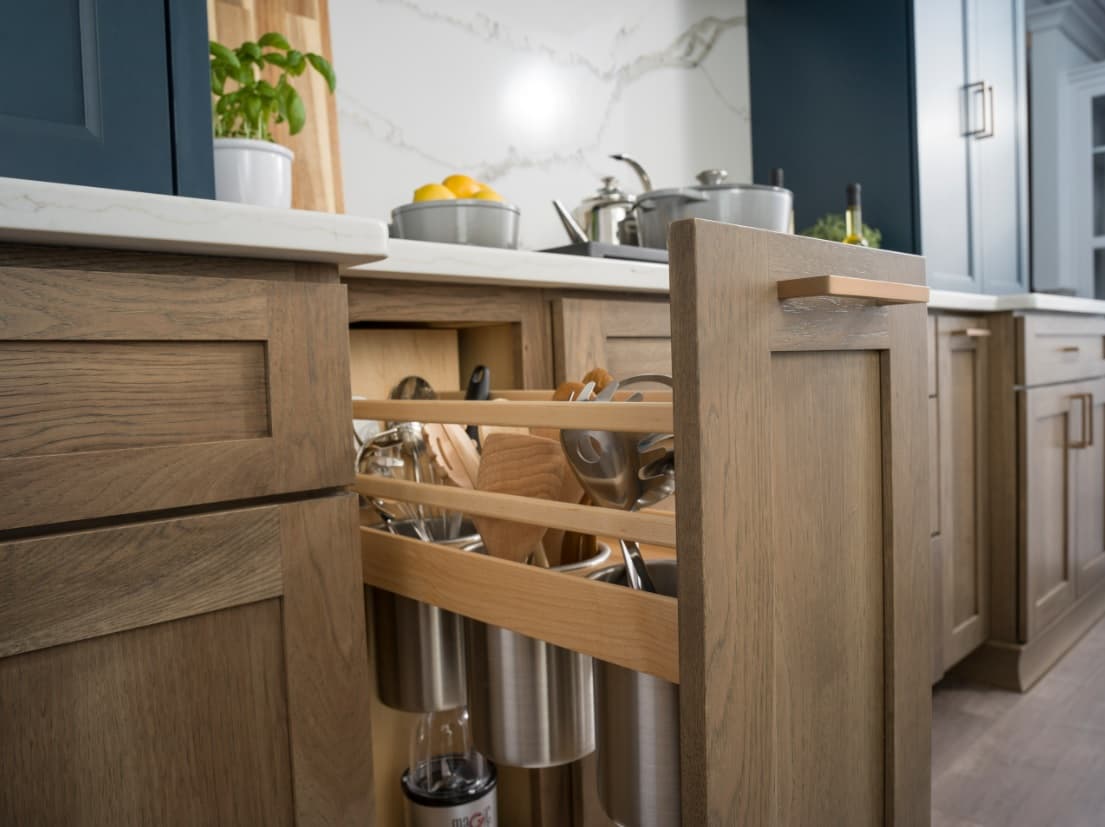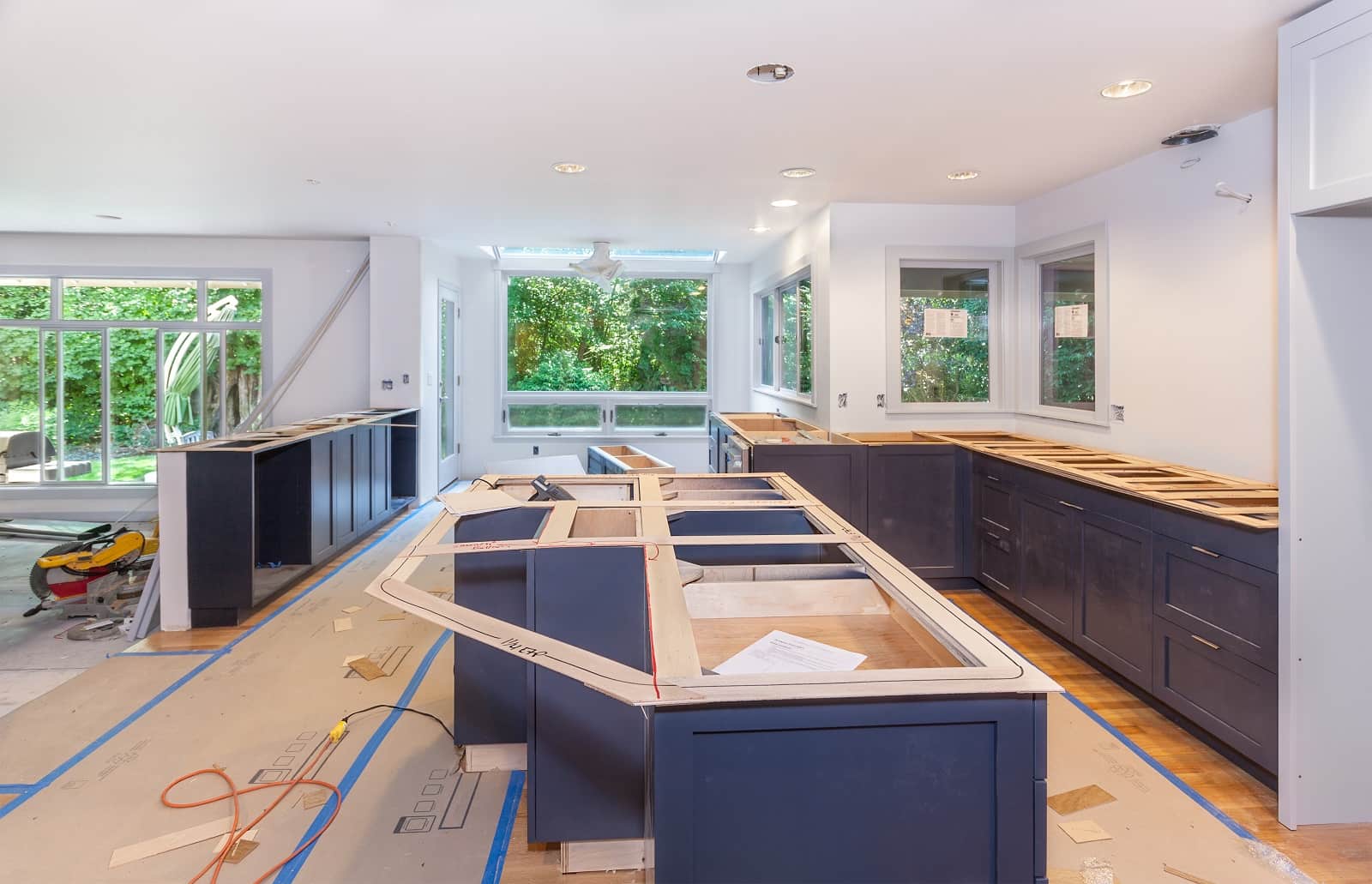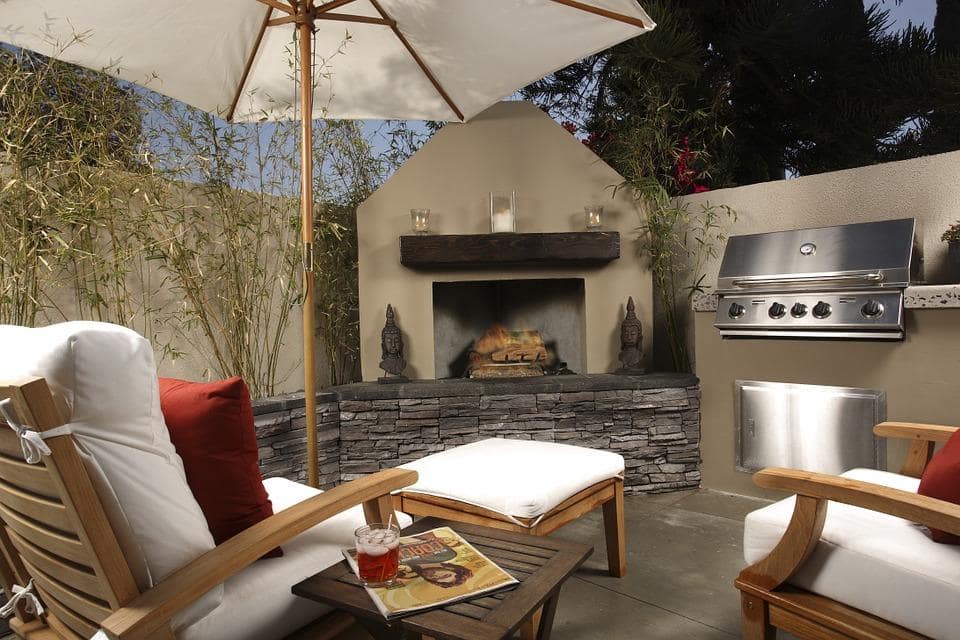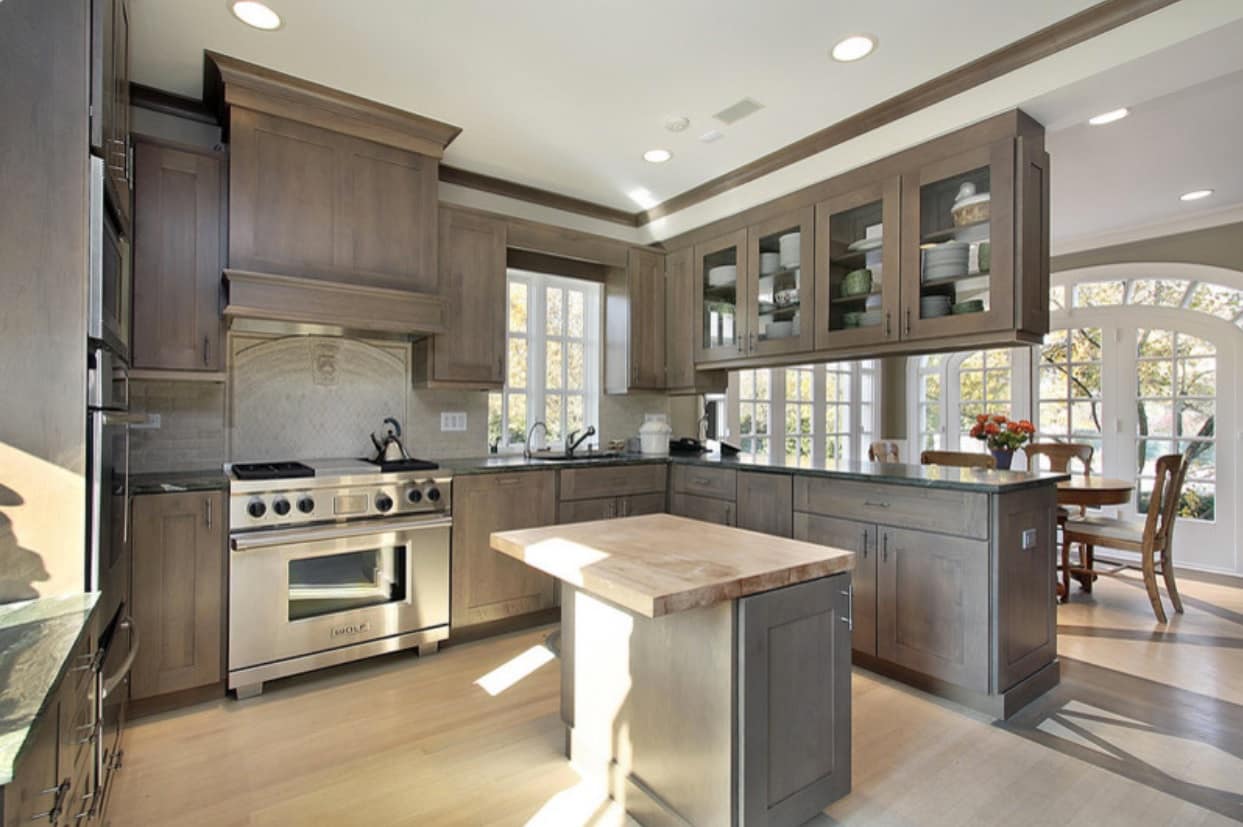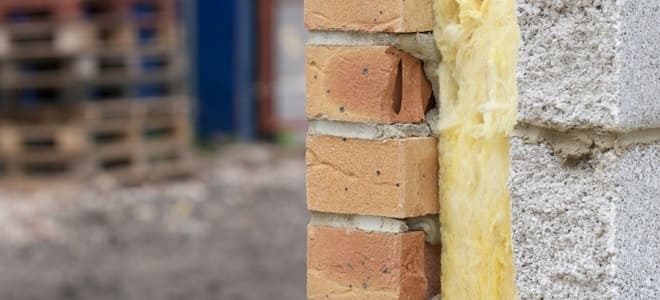Literally, every owner, who is planning repair of the kitchen space, faced with a choice of finishing materials for the walls. You are most likely to face this dilemma. This is due to the specific functioning of the kitchen space. The features of the kitchen space are high humidity, constant changes of temperature conditions, the presence of soot, and hot fat droplets in the air. Despite the increasing popularity of the use of powerful extractors, the walls in the kitchens are often exposed to various destructive factors. The good news for all homeowners, who plan a renovation in the kitchen area, is that there are plenty of materials. But the choice still waits for your decision. In order to make it easier to navigate in a variety of kitchen walls best finishing materials with photos, we have created a selection of current design projects for modern kitchens.
Content:
- Requirements for finishing materials of kitchen space
- Ceramic tiles in the kitchen area
- Painting of kitchen walls:
- choosing a paint color;
- difference between the glossy and matte surface.
Requirements for Finishing Materials of Kitchen Space
Obviously, the choice of finishing materials affects primarily the style of interior design and the basis of zoning premises on working and dining segments. But because of the functional characteristics, specific microclimate of the kitchens, there are performance criteria to be met by finishing materials:
- resistance to moisture, splashes of hot water;
- keeping the original appearance after exposure to high temperatures, dripping hot grease and grime;
- ease of care, which suggests the possibility of cleaning the surfaces (using a solvent) and then saving the “marketable condition” of finishing material;
- a high level of hygiene – no tendency to accumulate and multiplication of harmful microorganisms.
One can often see the use of ceramic tiles or mosaics, painting, and pasting wallpaper on the walls in the real kitchens. Also, wall panels veneering and application of decorative plaster are in use. Of course, most finishing materials are combined within the functional areas of the kitchen facilities. In this case, the main separation factor is the presence of working and a dining area. Namely by means of combining the decoration of certain segments of the functional kitchen segments achieves the maximum effect and the ratio of decorative and technological parameters.
Ceramic Tiles in the Kitchen Area
Ceramic tile and mosaic are among the most popular materials for kitchens’ cladding. When making a kitchen apron ceramic cladding becomes a simply indispensable tool. The incredible popularity of this finishing material is explained by the following technological and decorative properties:
- durability;
- the ability to tolerate high temperatures;
- moisture, hot grease resistance, and other harmful factors;
- ease of care, the possibility to use detergents;
- the richness of color and texture solutions, variations of size and configuration;
- excellent compatibility with other finishing materials.
Conventionally, the entire ceramic tile can be divided into the following types:
- smooth;
- textured;
- glossy;
- matte.
The smooth glossy ceramic tile is longer looks clean. Also, it is easier to wash such tile.
At first sight, anyone can find a suitable option for ceramic tiles to renovate the kitchen area. But the question is: how much time will you spend? You must choose the tile which will protect the wall of the kitchen from various exposure factors. Moreover, it should become an organic element of the interior. There is represented a lot of ready-made collections in general sale, which organically selected for cladding floors, walls, kitchen splashback. There are decorative elements, various panels, borders, moldings, and baseboards.
It is hard to meet the project of kitchen design, where all the surfaces of the walls would be lined with tiles. Yet in the modern interior of the kitchen, ceramics is most common as a backsplash or the working area of the wall trimming. The entire surface over the entire working area (sector of the sink and the hob or plate placement) can be arranged with the help of ceramic tiles or mosaics. You can make such an area the accent wall with the help of color or texture.
Painting of Kitchen Walls
For many of our compatriots, painting the kitchen walls becomes the best option for decoration. In the first place, it is due to the affordable cost of materials and the possibility to carry out all the work by yourself. The ability to find the right shade using the color mixing also serves as the advantage of such a finish. But it is important to understand that this method of wall design requires a lot of preparation. In particular, walls for painting must have a perfectly flat and smooth surface. Any unevenness on the wall will be more visible after painting. Don’t worry, you can rent special wall sanding equipment for a few days. It goes without saying that this will simplify and speed up your work.
Water-resistant and washable paints are suitable for kitchen spaces. As for the color palette, the choice of the options is variegated. Typically, using different brightness shades of one color, designers and their customers separate the food intake zone from the working area segment. But you can also use fundamentally different colors – bright, colorful tone for a dining area and pastel – for a working area.
Choosing a Paint Color
Choosing a paint color for the walls of the kitchen space, keep in mind that the cool colors (all shades of blue, green, and their variations) help to reduce appetite. But the tones of red, orange will awaken not only positive emotions and adrenaline but also hunger. Of course, the choice of the color palette for wall decoration will depend on the range of kitchen fronts. If your kitchen set is presented in a bright tone, it is better to choose a light, neutral palette for finishing. And vice versa – for the neutral color of the furniture ensemble colorful design of the vertical surfaces of the room will be a great companion.
Difference Between the Glossy and Matte Surface
When choosing between glossy and matte paint, it is important to understand that the surface with a slight shine looks great and even visually able to increase the scope of the room. Glossy one is perfect for cleaning and does not gather dust. But the smallest surface irregularities are clearly visible on these walls. If you do not sure about the ideally grinded walls, it is better to prefer matte and semigloss paints.
The mainstream of modern kitchen space design projects is the use of black paint to finish one of the walls. This surface becomes a sort of communicative ground for the households. You can post messages to each other, write recipes, or just post photos, children’s drawings, postcards, and put magnets brought back from trips on a dark surface.

















